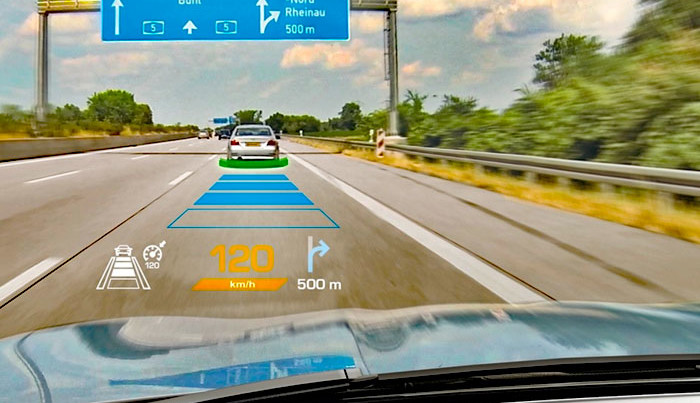Project IBELIVE: compact LED displays with integrated optics
April 05, 2018
on
on

A cooperation of the Fraunhofer Institute for Applied Optics and Precision Engineering together with TEMICON and Continental, Osram Opto Semiconductors are developing very compact and low-profile optical components for applications requiring data visualization and illumination. The German Federal Ministry for Education and Research (BMBF) funded the project named IBELIVE which will provide solutions for optoelectronics used in compact, limited-space applications. Typically this includes high-intensity head-up display projection units, ultra-thin flashlights and selective direct-display backlighting functions.
As part of the three-year research project ‘IBELIVE’ (the acronym comes from the German for ‘Innovative hybrid diffusers for low-profile lighting systems with tailor-made light distribution’) the consortium has set itself the goal to develop extremely compact, multifunctional optical components. The premise of the research work is that while there is not much scope for significant reduction of the LED profile there is still great potential to further miniaturize their optics allowing use in more space-restricted applications.
Throughout the project, the consortium will explore flexible design and manufacturing processes for space-critical applications in the field of data visualization or lighting. The planned reduction in the thickness of the optical elements and the ability to combine different optical functionalities into one microstructure will provide system designers with much more flexibility when integrating the components into the end devices. Another advantage will be the improved energy efficiency ensuring that a significantly higher proportion of the generated light will be available for the application.
As part of the three-year research project ‘IBELIVE’ (the acronym comes from the German for ‘Innovative hybrid diffusers for low-profile lighting systems with tailor-made light distribution’) the consortium has set itself the goal to develop extremely compact, multifunctional optical components. The premise of the research work is that while there is not much scope for significant reduction of the LED profile there is still great potential to further miniaturize their optics allowing use in more space-restricted applications.
Throughout the project, the consortium will explore flexible design and manufacturing processes for space-critical applications in the field of data visualization or lighting. The planned reduction in the thickness of the optical elements and the ability to combine different optical functionalities into one microstructure will provide system designers with much more flexibility when integrating the components into the end devices. Another advantage will be the improved energy efficiency ensuring that a significantly higher proportion of the generated light will be available for the application.
Read full article
Hide full article



Discussion (0 comments)